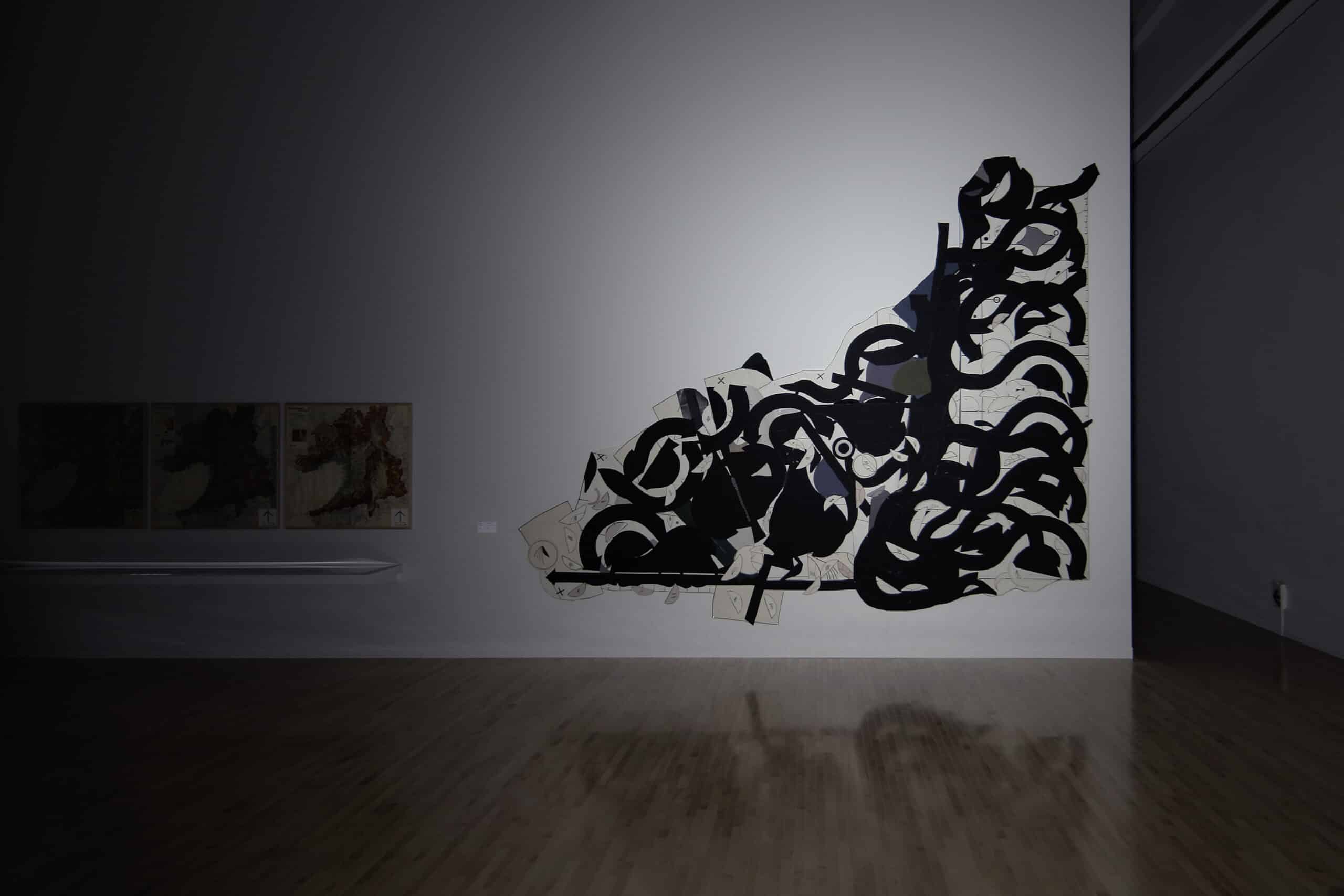Élodie Royer: During our discussions before this interview, you suggested that it should start with this short video before any comments were made. I hope our readers will take the time to watch it. These images, filmed during the first lockdown because of the Covid-19 epidemic in the spring of 2020, show the collective exhibition “Things Entangling” at the MOT, the Museum of Contemporary Art Tokyo, which could not at the time open its doors to the public. Because of this situation, you asked Che Kyongfa and me — who were both curators of the show you were taking part in — to shoot these works and set-ups in this unreal configuration: that of an abeyant exhibition, affected by a health disaster. I found this proposition stunning, coming as it did from an artist, who, since 2011, has constantly been filming another inaccessible site, where human life has still been more or less interrupted for an indeterminate period of time, because of another ongoing catastrophe, which in this case is nuclear. Could you go back over the reasons behind this proposition and what it evokes about your work?
Hikaru Fujii: What interested me about this was that there were all these artworks there, to be filmed in the context of a museum, without any human presence. What’s more, in this show, there were lots of works that spoke about the issue of human extinction and the bonds that link us with our habitats. Because of Covid, the imagination that existed in artistic forms had become irremediably transposed in reality. Humanity had disappeared, there were just objects on show. This situation greatly interested me, in terms, too, of the Futabacho History Folk Museum, which I’d being filming for several years. A closed museum, four kilometres away from the Fukushima-Daiichi power plant, in a contaminated area, still called a “difficult-to-return-to zone”, where something similar had happened, but for different reasons.
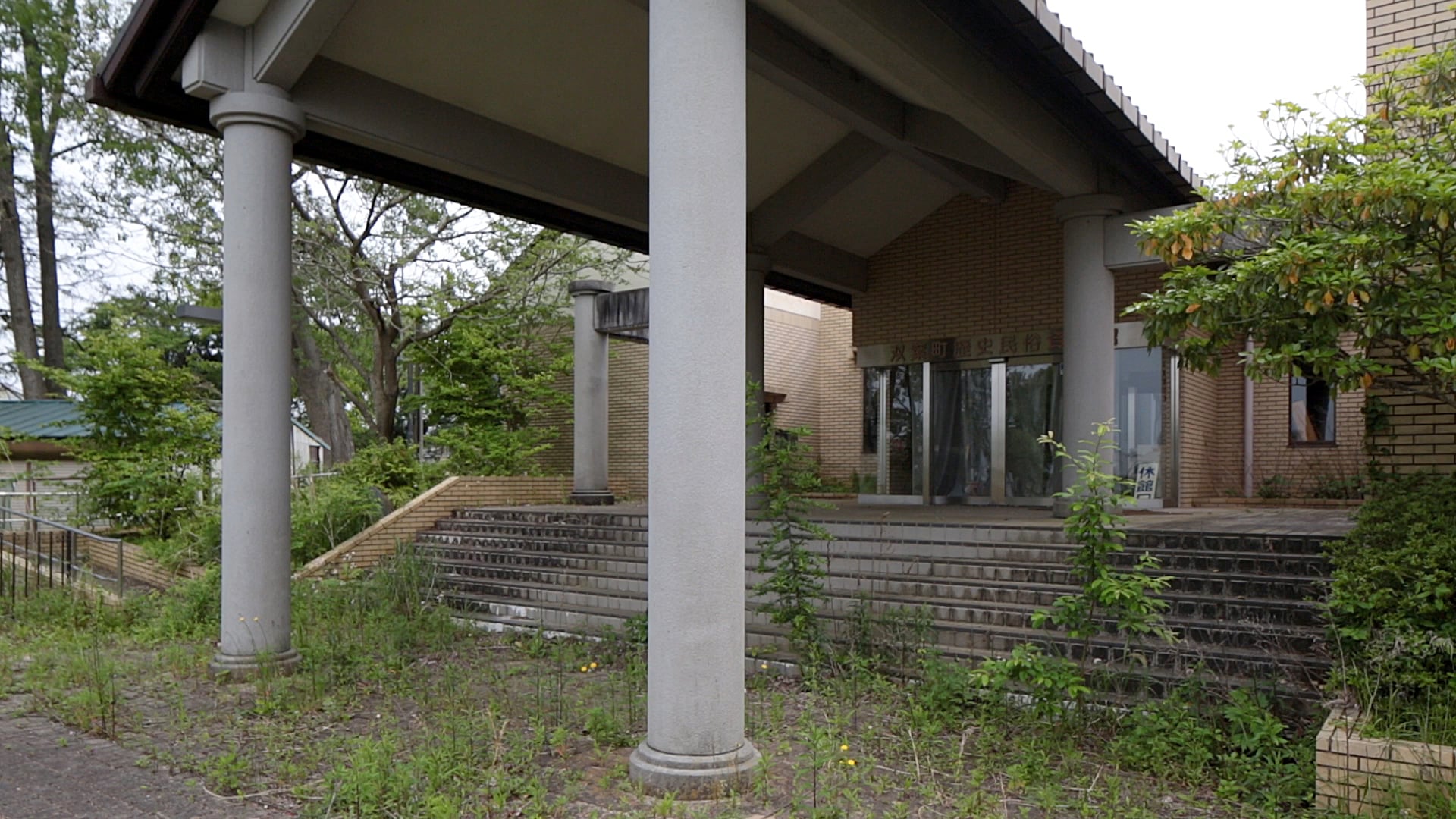
ER: We should maybe clarify the context a little, before going into detail about the long-term project which you carried out between 2016 and 2020 in the Fukushima prefecture. This museum, founded in 1992 and directed by the curator Takamitsu Yoshino for twenty years, up until the accident, conserved a collection of archaeological, historical and cultural artifacts, connected to this region’s history. For the first few years after the disaster, this museum was virtually abandoned, with its collections inside, until its curator decided, initially without any governmental aid, to go about preserving and moving these artifacts outside the zone, thanks to a network he had put together himself of colleagues and inhabitants in the Fukushima region. You captured the entirety of this process, both in its pragmatic and planning dimensions, which was then transposed into a series of works and events set in the history of this museum and a questioning of its interrupted function.
HF: The first time I went to film the Futaba Museum was when the objects in the collection were being inspected before being moved. In other words, the curator and the community that had been built up around himself, in a dynamic of mutual assistance, were making an inventory to list all the objects, checking that they hadn’t been damaged after having been stored in a museum with no controls of temperature or humidity, given that there was quite simply no more electricity in the zone, and measuring their level of radioactivity, before boxing them up and “exfiltrating” them from this contaminated territory. I filmed the care paid to these objects which had received practically no attention for years, as well as the exhibition rooms in a museum, where all that was left were the display materials.
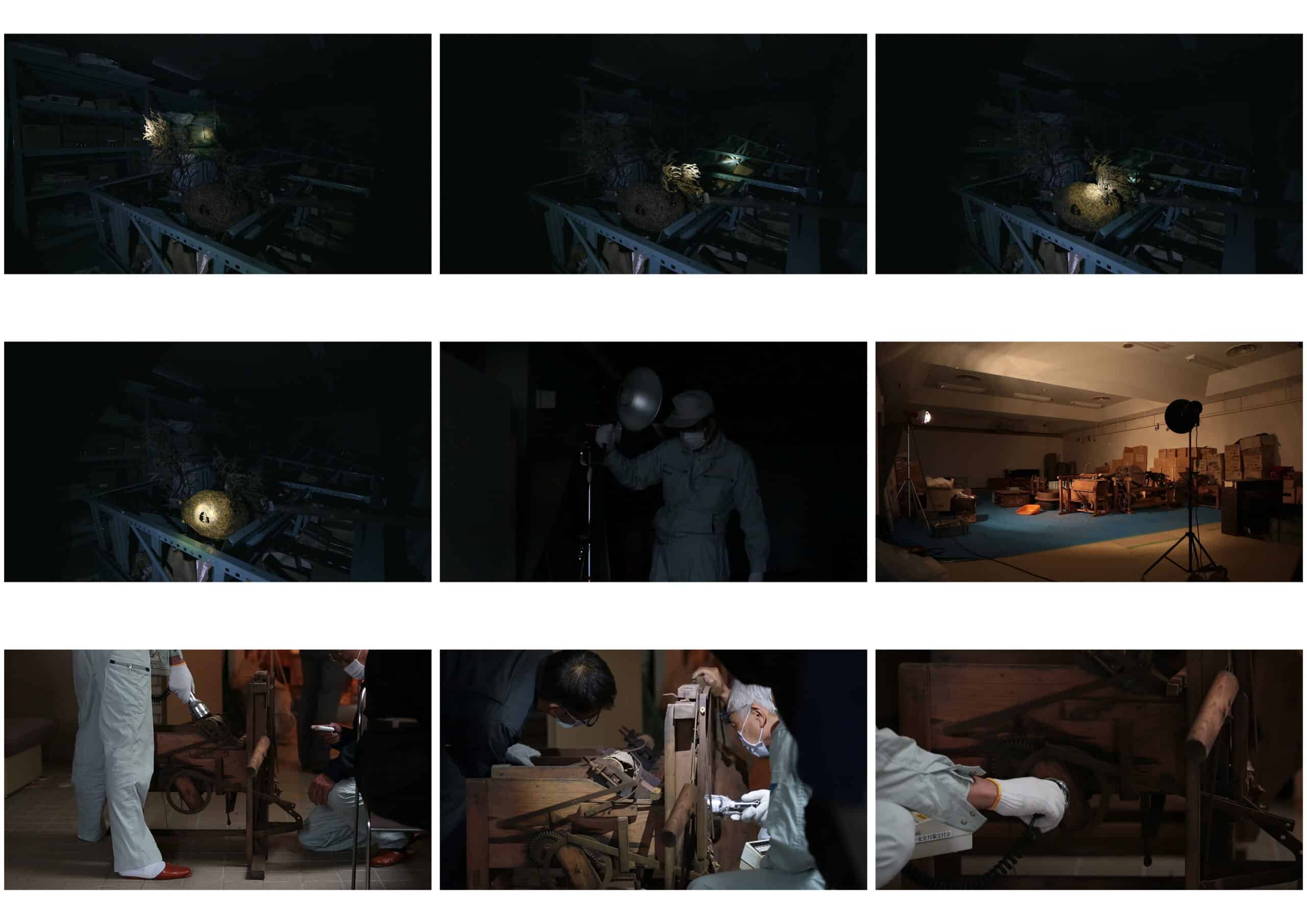
Hikaru Fujii, The Anatomy Classroom, 2020, captures vidéo
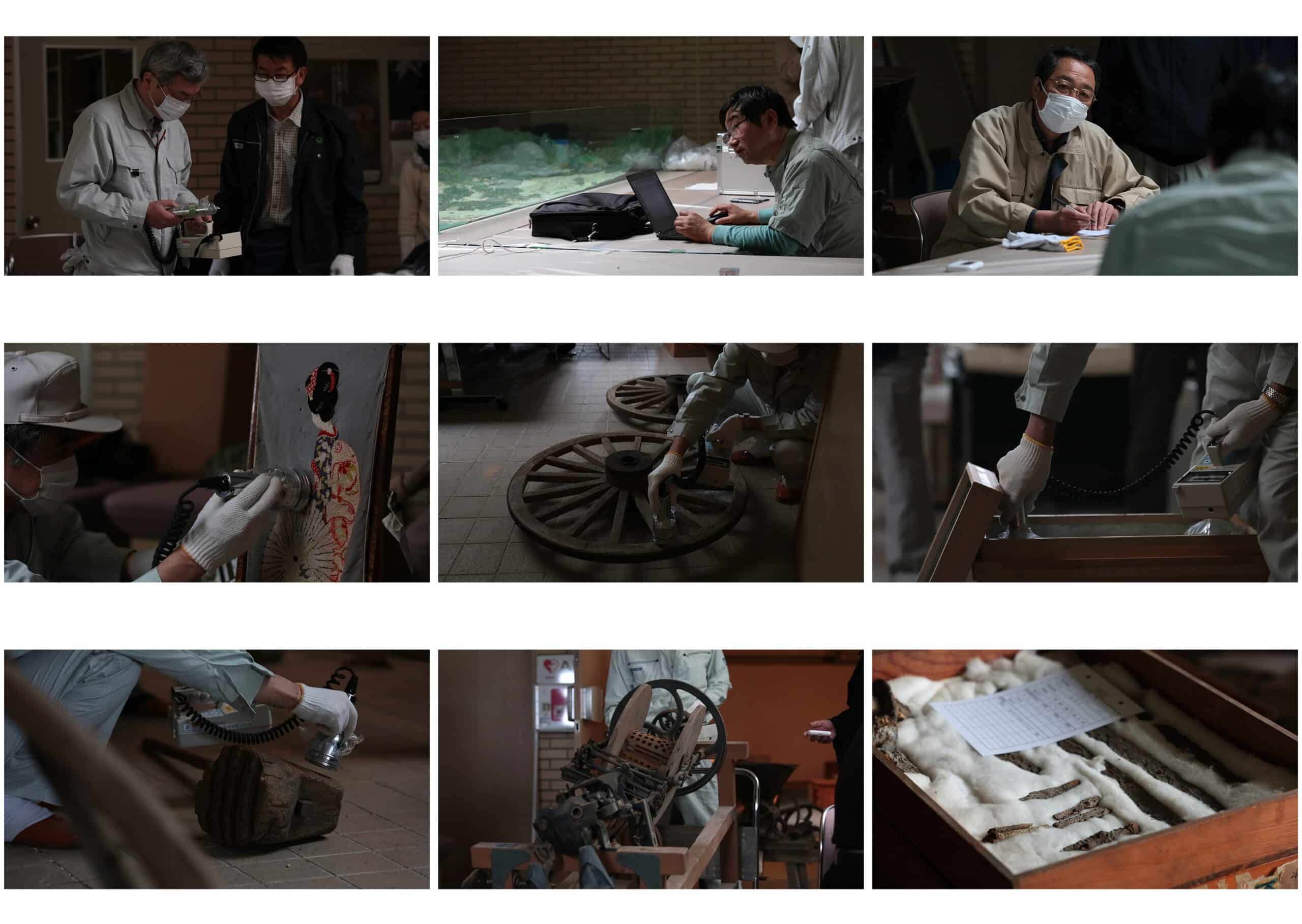
Such museological questions have always interested me in my work as an artist and can already be seen in my earliest pieces — what do our societies choose to preserve, to archive, or to write down as a shared narrative? But, in Futaba or at the MOT, something else was happening, which I tried to capture by filming its empty spaces. Something visual that these experienced situations, with no human presence, show up in a very head-on way, in other words the architectures of our lives, as we have constructed them, and their interrelation with our everyday, human behaviours.
ER: It was indeed staggering in 2020 to be confronted by this superposition of two situations with a form of social thoughtlessness: urban zones without human life. It should also be remembered that, in this exhibition, some artifacts from the Futaba collections were being presented to the public for the first time since the catastrophe and had once more been removed from view for a different health reason. To return to the question of objects, why did you choose this collection in particular, as a thread to display the context of that disaster? What do these objects name? How are they seen today?
HF: I think that the Fukushima accident quite clearly marked the rupture of relationships that had existed for centuries between a territory and the human beings who lived there. This interdependency and continuity had been suspended. We human beings had been forbidden to enter certain “difficult-to-return-to zones”. But those objects had stayed there for many years and continued to exist in that space-time. So, what an object tells me is because of, or thanks to, itself. I can’t forget the past. Because, through it, I have the chance to link back up with my own history, with past traditions and to connect again with different timelines.
ER: An object can indeed also summon up other types of perception, which are affective or environmental, intimate or collective. And even though it might have this capacity to crystallise a kind of continuum, when it comes to Fukushima and its radioactive fallout which was deposited across the territory, it was no longer possible to get near to some of these things, nor remove them from this zone. We obviously know about the scariness of this situation for the inhabitants of these zones, who had to abandon everything. So, the objects left in this zone could be considered as toxic, including the ones from the Futaba collection.
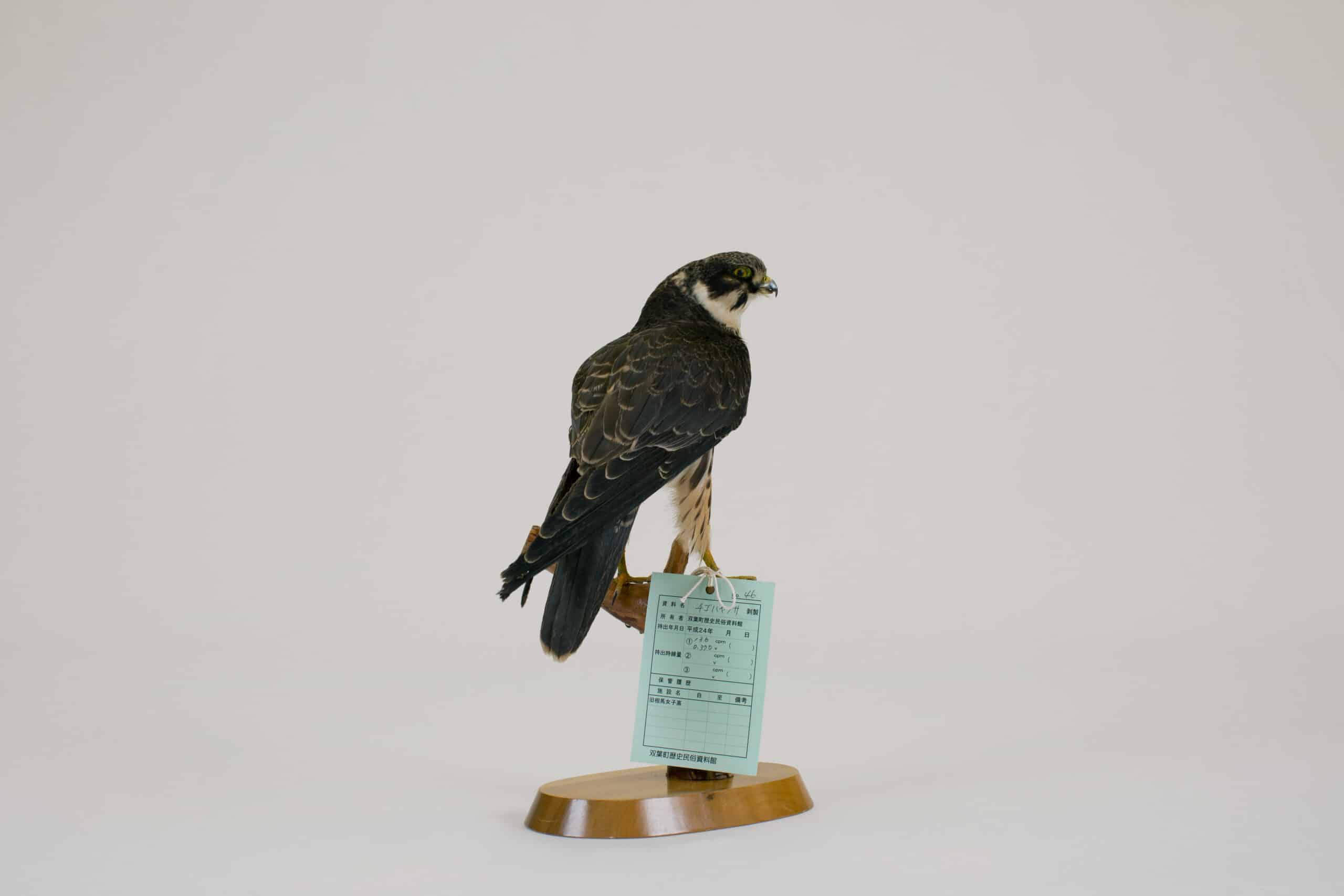
An artefact from the collection of the Futabacho History Folk Museum, with a label attached noting its particularities (name, species, date of arrival in the collection, etc.) as well as the radiation dose when it was recuperated.
HF: This question of toxicity was also raised concretely when they were presented to the public in our show at the MOT. One visitor literarily had a panic attack on seeing these objects, and even took out a court case to complain about the fact that they were potentially radioactive and a health danger. So we had to check them, and measure their levels of radioactivity one by one, to prove that there was no danger. And even if a label was then produced that stated that these objects were free of any health risks, there was still this ambiguity, that potentiality about them. I’d go so far as to say that they were seen as being cursed.
ER: I’d never thought of such a pungent word to describe those objects! I might have said haunted, which implies the idea that we can still live with them, by their side. While the word cursed clearly suggests the idea that they are objects which are no longer wanted, which have been rejected by society. This is, in a way, true for this collection which is still stocked in a warehouse in Shirakawa (in the south of the Fukushima prefecture) and hasn’t been put back into a museum. So, while these objects have been shown not to be chemically toxic, it could be said that they are seen to be toxic for society, just from the fact that they exist and bear witness to a nuclear disaster. It can thus be understood that they do pose problems in a country that has done everything to make invisible the long-term consequences of this catastrophe…
HF: Before answering, I’d like first to go back over the history and context of how these objects were saved. This “difficult-to-return-to zone” was made inaccessible by the law. That’s really important. It was decided by the government that human beings couldn’t go into the zone, or work there, etc. except of course for the day labourers recruited to decontaminate the soil. But the objects, still in the zone, “worked on away from humans”. Given this situation, the curator of the Futaba Museum, in collaboration with other curators in Fukushima, wrote a protocol so as to allow these objects to be moved and conserved outside this zone. So, without any help from the government, they set down some rules, based above all on readings taken during the Chernobyl catastrophe. In this way, they set this action in motion and managed to get round the law.
ER: All the same, it’s incredible to think that objects with such great heritage value – they bear witness to an ecosystem which is now inaccessible and the life of an “unmade” community – were not taken in hand by the Japanese state, either in a pragmatic or conceptual way. The role of a collection is also to narrate the spaces and timelines that delineate our existences. For all these reasons, it seems obvious, and even capital, to take into consideration this collection because of what it has to say about this territory, before and after the catastrophe. What do you think is the real reason why it was not taken in hand? Why didn’t the government think it necessary to take charge of this repatriation and renewal of a narrative?
HF: A few years later, the curators’ calls were finally answered and the government granted some funds to protect this collection. However, right from the start, no one wanted these things, because they came from a contaminated zone. The management of the waste from the tsunami and the earthquake was an enormous problem. The amount of waste was so huge that no one knew what to do with it, especially what came from around Fukushima Daiichi. Nobody wanted such things, even the ordinary people from the area. The same went for this collection of artifacts.
ER: What Yoshino San did was a genuine piece of activism when he stopped this collection from disappearing.
HF: He managed to move the objects to Shirakawa, but this was done almost secretly. Anyway, without it being announced officially. If it had been communicated, people would have said no. The objects from Futaba became nuclear waste just like anything else. They were given the same value.
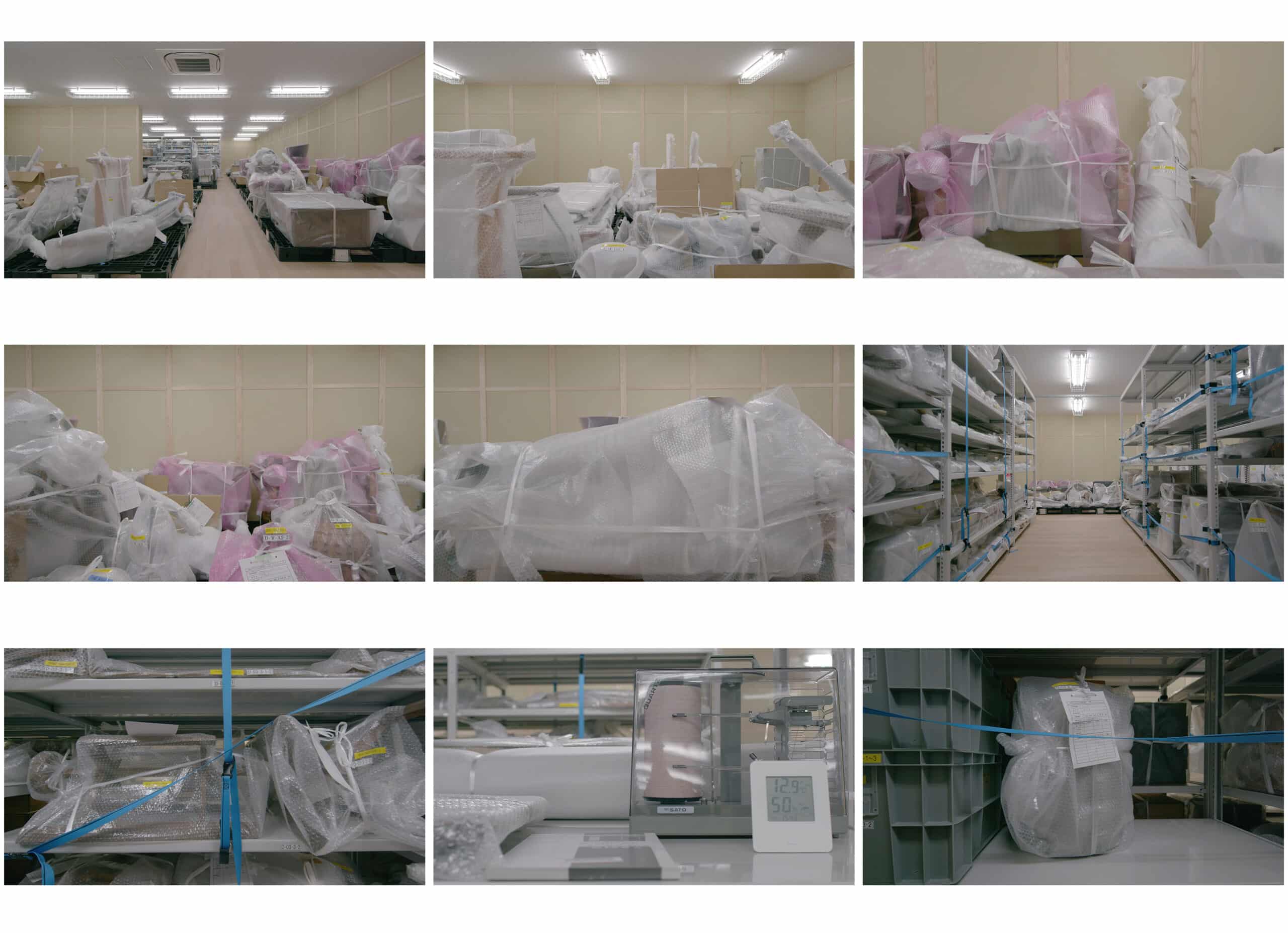
ER: In a way, this situation shows up the invisible and insidious, destructive force of nuclear power, from a moral and psychological viewpoint as well.
HF: But, in the end, it shows up the power of the objects, and their agency. All of them have finally been conserved because of the layers of history they possess. A plural history, from the context of their first appearance to their inclusion in a museum collection and narrative. But they also tell the tale of the Fukushima Daiichi power plant and the nuclear accident. Thus, an object is extremely powerful!
ER: What I find really beautiful is how they have survived the catastrophe and oblivion, thanks to a few human initiatives. This is also what this project displays. It reminds me of the anthropologist Margaret Mead’s well-known but still forceful statement: “Never doubt that a small group of committed, thoughtful citizens can change the world; indeed it’s the only thing that ever has.” Which leads me to the collective dimension of your project, which has been built up over the years, from different viewpoints, with different opinions, without any authority figure, and which has meant being able to undo the entanglement of temporal, environmental and political issues raised by the catastrophe in the Japanese context.
HF: My way of working is always collective; it is linked to what I do as an activist. Before the nuclear accident, I collaborated with activists to produce certain works which were then shown in museums. There was a kind of continuity. But, after the disaster of 11th March, this idea of collectiveness changed. Given the catastrophe, working collectively was no longer a choice, but a necessity. When it comes to activism, a collective is strategically necessary and has the very clear political goal of making things shift. It’s different from art, but I still like being with other people in this way. For this project, for example, a symposium was organised, titled “Memory and Representation of the Catastrophe: Potentiality and Responsibility”, in Iwaki in October 2017, to which I invited anthropologists, historians, experts in the political sciences and curators of Japanese museums. By sharing their knowledge and their practices concerning the preservation and exhibition of objects that bear witness to a nuclear or other type of disaster, they addressed the museological, historiographic and political issues which the Fukushima community is now facing.
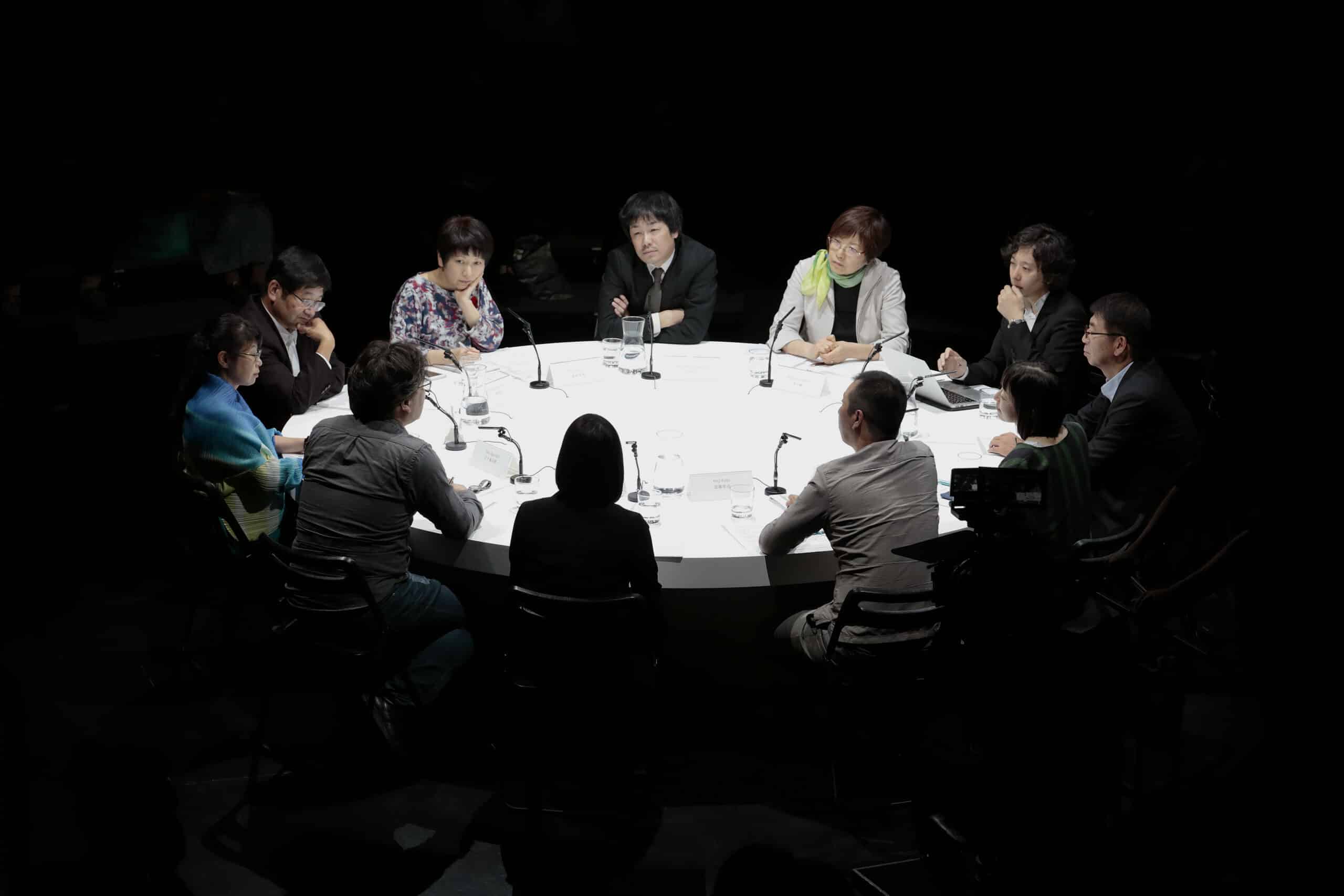
“Memory and Representation of the Catastrophe: Potentiality and Responsibility”, 2019
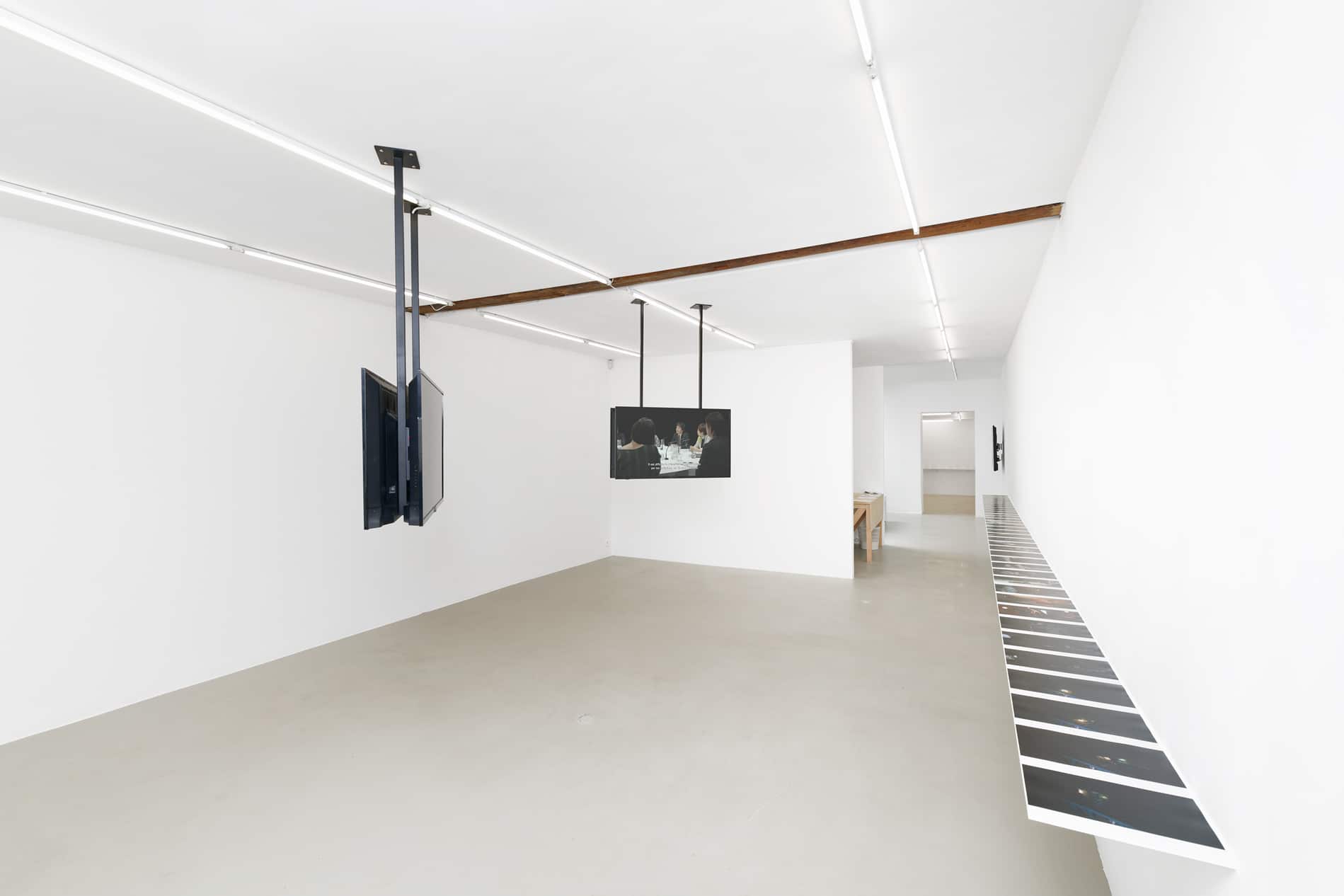
“Memory and Representation of the Catastrophe: Potentiality and Responsibility”, 2019
ER: Based on this symposium, you made a video installation which now stands as a precious archive, a choral work that brings together these different voices around the importance of articulating the memories and subjectivities of this territory, with a view to countering the creation of a dominant discourse, amnesia or indifference. Furthermore, the plural in the title, Les nucléaires et les choses, underlines the importance of setting the project in a longer history of Japan. The idea was not to look at just one disaster, but several, to learn from their differences as well as their similarities in terms of what they have damaged in ecological, intimate and collective terms.
HF: Indeed, using the objects from Futaba, I tried to broaden the thinking about the potentiality of objects during a disaster. But extending this thought process to other situations was not that simple in a Japanese context. During this symposium, the disasters of Fukushima, Hiroshima, or the tuna boat irradiated in 1954 by radioactive fallout when the US tested an H Bomb in the Bikini Atoll (the most powerful weapon ever tested) were for example linked together, whereas in Japan, making such associations is not really possible, given that each disaster has its particularities. But these were distinctions that were also made in the dominant discourse, so as not to stigmatise the Fukushima disaster, or make it too important in the eyes of public opinion.
ER: We can see here that same strategy of invisibilisation mentioned before, and of normalisation of the catastrophe carried out by the government.
HF: Yes, humanity has always wanted to tell how humans transcend disasters, hasn’t it?
ER: Is this the reason why it seemed so important to you to make these historical connections?
HF: Since 2011, the media, the government, the population, everyone, has been talking about reconstruction, the future, but I was interested in creating a kind of critical disjunct from time. In which art can embody a sort of continuity just where there is this apparently decisive split between the before and after of a disaster. I wanted to talk about the past, to learn from these historical events and confront them.
ER: This process was in fact just like your practice in general, based on explorations that dig into the roots of certain contemporary situations and seek out ways of thinking about the present from certain historical details.
HF: In the case of Fukushima, the narratives expressed by the government about reconstruction whose aim was above all to show how mankind has transcended a disaster, were conjugated only in the present tense. Yet, the violence of the nuclear accident literally sectioned all our relationships with the present, by undoing ecological, communitarian or affective bonds — those that anchor a community onto a territory. That’s maybe why I looked again towards the past.
Recently, a new official museum has opened in the Fukushima Prefecture, but they didn’t reach out to the regional curators for their expertise. They could have called on their deep knowledge of this territory and asked them to write this new museal narrative. For example, some of the objects from the Futaba collection narrate why the Fukushima Daiichi power plant was built in this particular region. A territory which, during World War II, also contained the site of an important military base that trained kamikazes.
ER: Could you be more precise concerning this question about the localisation of power plants in this country? Could you explain why these particular territories were designated – or even sacrificed?
HF: The placement of power plants in Japan can’t be explained by geological or geographical considerations. It is more linked to the centralised power, which comes from before the Meiji Era (1868-1912) and the history of the colonisation of some provinces in Japan by this centralising power. It bears witness to this form of domination exercised over these territories in a process of control and cultural assimilation. Thanks to these objects that remain and testify to this past, we can finally understand such geopolitical strategies.
ER: Strategies that often take away with them everything all at once, including the visible and the invisible links that are woven into a territory, those that bind communities to their places of origin and their history.
HF: Concerning this disaster, the government underestimated its responsibility as well as the human and political criminality that can be attributed to it: nuclear power not only destroyed regions and human lives, but also 2,000 or 3,000 years of history, if not more.
ER: This question of responsibility reminds me of the German philosopher Günther Anders who wrote extensively about the Hiroshima catastrophe. According to him, these disasters should be seen as coming from “us”, from what we have invented in a political and technological modernity, instead of viewing them as catastrophes that are natural or linked to failings in human nature. In other words, they are things that come from us, but which we don’t want.
Élodie Royer and Hikaru Fujii, July 2023




